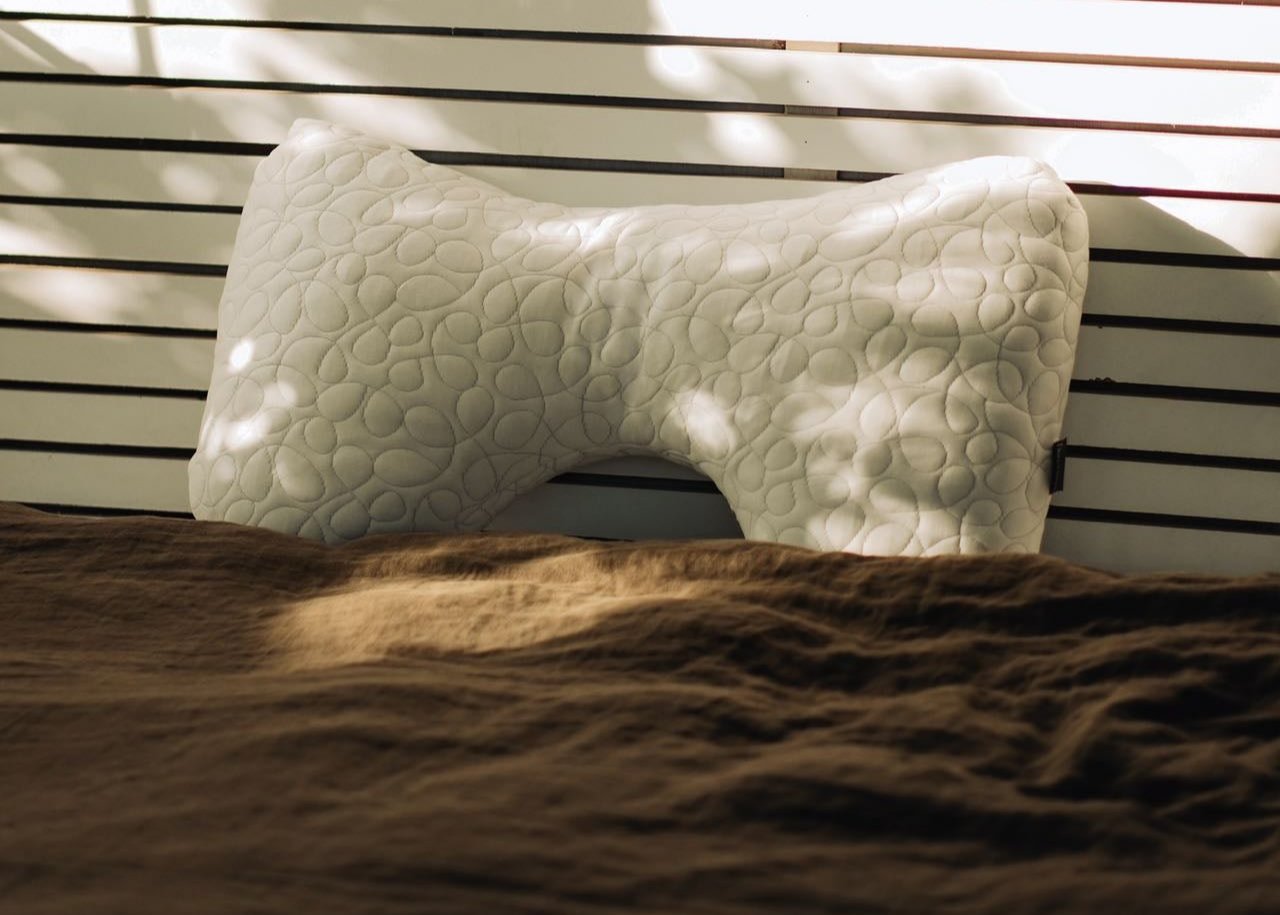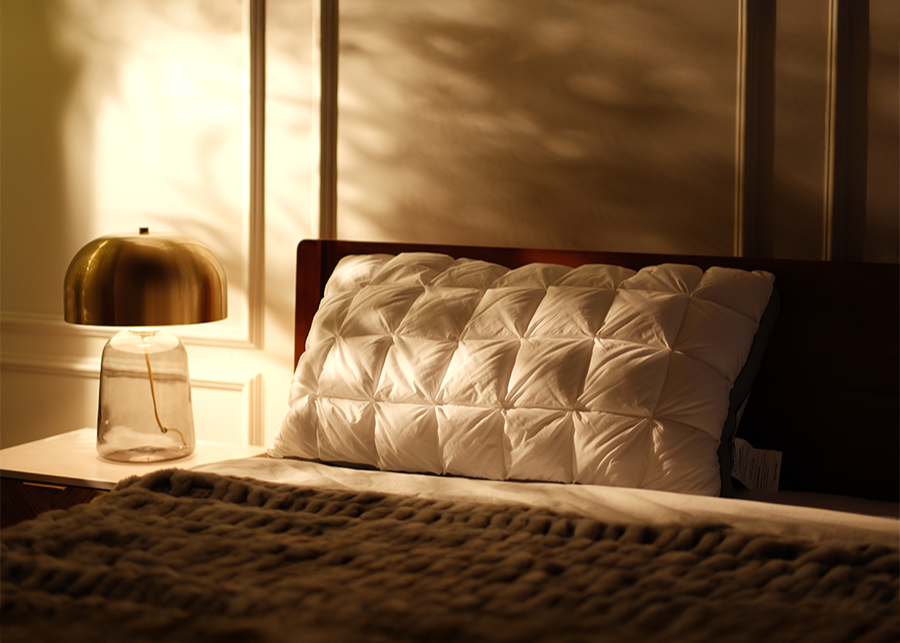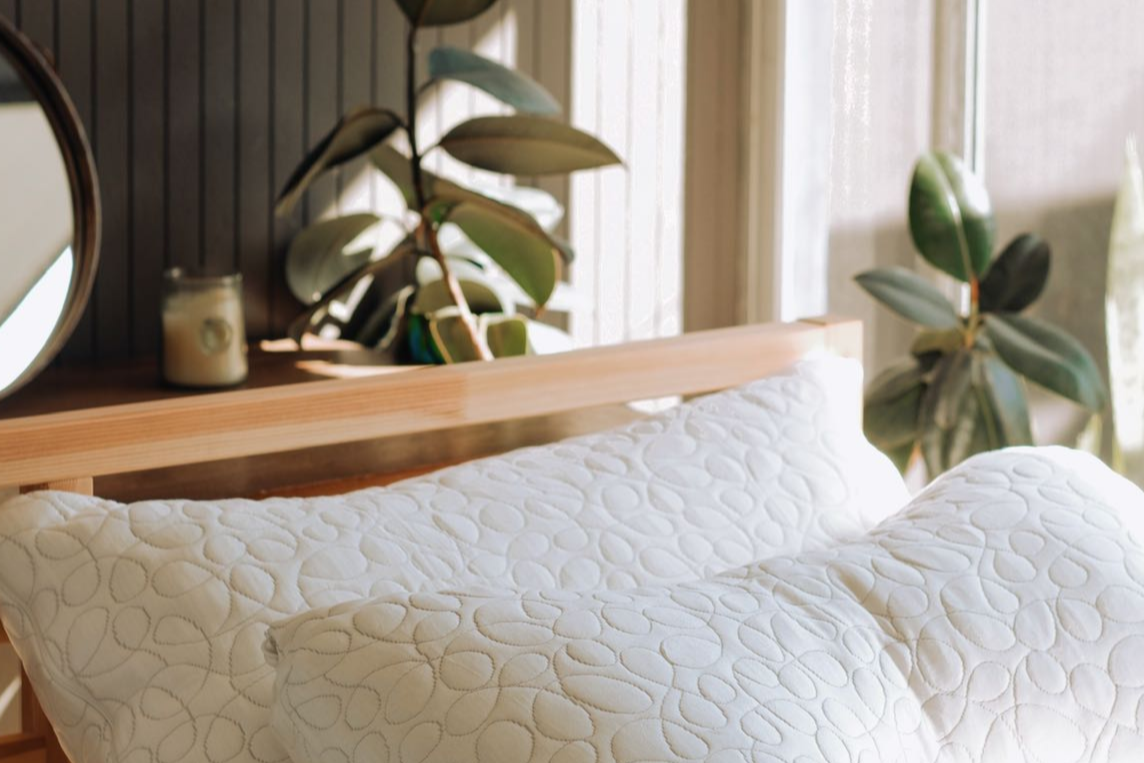Sustainable Pillows: Eco-Friendly Materials for a Better Night’s Sleep
In an age where many of us are striving to live greener and make healthier choices, it’s easy to overlook one everyday item that impacts both our well-being and the environment: our pillows. We spend hours every night face-planted on these plush supports, but how often do we consider what’s inside them or how they’re made? From chemical off-gassing to non-biodegradable foam filling, conventional pillows can carry hidden costs to our health and the planet. The good news is that a new generation of eco-friendly pillows is changing that. In this article, we’ll explore why sustainable pillow materials matter, what kinds of green options are out there, and how choosing the right pillow can lead to a healthier sleep and a happier Earth.
Why Go Green with Your Pillow?
Choosing an eco-friendly pillow isn’t just a feel-good, tree-hugging gesture – it has tangible benefits for you and the environment:
Healthier Sleep Environment
Traditional pillows, especially those made from synthetic foam, can emit volatile organic compounds (VOCs) and other chemicals. That “chemical” smell when you open a new memory foam pillow? Those are VOCs off-gassing. Prolonged exposure to such fumes in an unventilated bedroom might irritate your respiratory system or contribute to headaches for some people. Sustainable pillows are often made with materials that have fewer or no harmful chemicals, meaning less off-gassing. Many are certified to be free of toxins like formaldehyde, heavy metals, or flame retardants. This leads to cleaner indoor air around your bed and peace of mind that you’re not breathing in nasty stuff all night.
Allergy-Friendly Options
Natural and organic materials can be a boon for people with allergies or sensitivities. For instance, conventional poly-fill or feather pillows can harbor dust mites or mold if not cared for, and some people are allergic to those materials themselves (feathers, for example). Sustainable pillows filled with materials like natural latex, wool, or buckwheat are often naturally resistant to dust mites, mold, and bacteria without needing chemical treatments. Organic cotton covers lack the pesticide residues that might bother sensitive skin. Overall, going green can mean fewer allergens and irritants in your sleep environment.
Environmental Impact
Consider what happens to an old pillow when you’re done with it. Unfortunately, millions of pillows end up in landfills each year. Most poly-fiber or memory foam pillows are not easily recyclable and can take centuries to decompose. By contrast, pillows made from biodegradable materials (like organic cotton, wool, natural latex, or buckwheat hulls) will break down much faster and more safely. Additionally, sustainable materials often have a smaller carbon footprint during production. For example, organic farming practices for cotton or bamboo use less water and avoid harmful pesticides and fertilizers that can pollute soil and waterways. When you choose a pillow made from these materials, you’re essentially “voting” for more environmentally-friendly agriculture and manufacturing.
Ethical Considerations
Sustainability often overlaps with ethical production. Pillows that use plant-based or recycled materials help reduce reliance on petroleum-based synthetics and often avoid animal products. For instance, choosing a down-alternative pillow made with recycled fiber or natural fills means no birds were harmed for your comfort. Some brands also ensure fair labor practices and donate to environmental causes. Every pillow purchase is a chance to support companies that align with your values regarding animal welfare and fair trade. (As a real-world example, DonaHöna pledges a portion of its profits to animal protection charities – a nice bonus when you buy their cruelty-free pillows.)
In short, an eco-friendly pillow can improve your personal sleep haven and contribute to a larger positive impact. Now, let’s look at what these pillows are actually made of.
Eco-Friendly Pillow Materials: What to Look For
Sustainable pillows distinguish themselves mainly through the fillings and fabrics they use. Here are some of the top green materials you’ll encounter and why they’re better for you (and Earth):
1. Organic Cotton
Cotton is a common pillow cover fabric, but organic cotton takes it to the next level. It’s grown without synthetic pesticides or fertilizers, which is healthier for farm workers, soil, and your skin. Organic cotton is breathable, soft, and hypoallergenic. An organic cotton pillow shell ensures that your face isn’t pressed against residues of harsh chemicals all night. Some pillows are even filled with cotton batting inside – if organic, that means the entire pillow is plant-based and biodegradable. One thing to check: certifications like GOTS (Global Organic Textile Standard) indicate genuine organic, sustainably processed cotton.
2. Bamboo Fiber
Bamboo has emerged as a popular sustainable textile. Bamboo grows extremely quickly without the need for much water or pesticides, making it an eco superstar crop. Bamboo-derived fabrics (often bamboo viscose or rayon) are used in many pillow covers and some fillings. They are prized for being ultra-soft, breathable, and naturally moisture-wicking (great for hot sleepers). Bamboo fiber is also naturally antibacterial and odor-resistant. It’s worth noting the process of turning bamboo into fabric involves some chemical processing, but many manufacturers use closed-loop systems to minimize waste and ensure the resulting fabric is free of harmful substances (look for OEKO-TEX certification on bamboo products). Several of DonaHöna’s pillows, for example, use a bamboo-blend cover to marry a luxurious feel with breathability and eco-friendliness.
3. Natural Latex
Latex pillows are made from sap of rubber trees (Hevea brasiliensis). When sourced responsibly (look for FSC certification or terms like “natural latex” or “organic latex”), latex is a renewable material that can be harvested without killing the tree. Latex foam provides a buoyant, supportive feel somewhat similar to memory foam but with a springier responsiveness. Importantly, natural latex does not off-gas the way synthetic foams do, and it’s free of petrochemicals. It’s also resistant to dust mites and mold. Latex pillows can last a long time (often 5-10 years), which in itself is sustainable – you’re not replacing them as often. And when disposed of, natural latex is biodegradable under the right conditions. If you want an eco-friendly pillow that performs like a luxury foam, latex is a top choice.
4. Buckwheat Hulls
This is a traditional Japanese pillow fill that has gained fans worldwide for its customizability and green credentials. Buckwheat hull pillows are essentially like a bean bag for your head. The pillow is filled with the outer shells of buckwheat seeds. These hulls are usually organically grown (or at least pesticide-free as they’re a byproduct of food production) and are compostable at end of life. The hulls inside the pillow can be added or removed to adjust loft and they naturally conform to the shape of your head and neck, providing excellent support. Buckwheat pillows are very breathable (air flows between the little hulls), making them a good choice for hot climates. They are quite firm and have a unique feel (and a subtle rustling sound when moved), so they’re not for everyone, but those who love them swear by the support and the knowledge that it’s 100% natural materials in use.
5. Kapok Fiber
Kapok is a silky, fluffy fiber harvested from the seed pods of the kapok tree (also called the silk-cotton tree). It’s a great sustainable substitute for down feathers because it’s very light and airy yet provides a decent amount of support when packed into a pillow. Kapok is plant-derived, hypoallergenic, and free from chemicals (the fiber is simply cleaned and used, not chemically processed). Pillows filled with kapok have a soft, medium-plush feel — kind of like a lighter version of a down or polyfill pillow. Since kapok is biodegradable and sustainably harvested in the tropics (often wild-harvested without cutting down trees), it’s a nice eco-friendly fill choice.
6. Wool
For those who aren’t strictly vegan in their material choices, wool is a natural fiber that offers fantastic benefits. Wool-filled pillows (or pillows with wool batting around another core) can regulate temperature wonderfully — wool keeps you warm when it’s cool and cool when it’s warm by wicking moisture. It’s also naturally resistant to mold and dust mites. Sourcing matters: look for wool that’s from humanely treated sheep and is not treated with a lot of chemicals (organic wool or wool with the OEKO-TEX Standard 100 certification). Wool is biodegradable and renewable (sheep grow more every year!). Wool pillows have a firmer, dense feel initially but often soften with use; they’re also somewhat adjustable (you can often remove some wool batting to adjust loft).
7. Recycled Materials
Not all eco pillows are made from natural fibers; some are made by giving a second life to old materials. Recycled polyester (from post-consumer plastic bottles) is one example. A pillow filled with recycled polyfill keeps plastic out of landfills and has a smaller carbon footprint than virgin polyester. These fills can mimic the feel of standard polyfill pillows but with the knowledge that you’re reusing materials. Similarly, some memory foam pillows use a percentage of plant-based polyols or include shredded foam that repurposes off-cuts from manufacturing (reducing waste). While a recycled polyester or partially plant-based foam pillow isn’t biodegradable, it contributes to a circular economy and reduced resource consumption. If you prefer the feel of a traditional down-alternative pillow or memory foam, looking for one with recycled content is a step in a greener direction.
In any pillow, also consider the cover fabric: materials like organic cotton or bamboo we mentioned are great for the outer case. Avoiding synthetic fabrics for the cover (like polyester covers) will boost breathability and is gentler on skin and environment.
Avoiding the Hidden Nasties: Certifications to Know
When shopping for a sustainable pillow, it helps to know some key certifications and buzzwords that indicate a product is genuinely eco-friendly and non-toxic:
-
CertiPUR-US®: If you’re considering any pillow with foam (memory foam, polyurethane foam), check if it’s CertiPUR-US certified. This label means the foam is made without certain harmful chemicals (like formaldehyde, PBDE flame retardants, heavy metals, and phthalates) and has low VOC emissions for indoor air quality. It’s basically a must for foam products nowadays if you care about air quality.
-
OEKO-TEX Standard 100: This is a comprehensive certification for textiles (fabric, threads, dyes, etc.). If a pillow (or its cover) is OEKO-TEX Standard 100 certified, it means every component has been tested to be free from a long list of concerning substances. It’s a good sign that the pillow won’t have residues of things like pesticides, formaldehyde, or toxic dyes.
-
Global Organic Textile Standard (GOTS): This is the gold standard for organic fibers like cotton or wool. A GOTS-certified pillow means it has a significant percentage of certified organic material, and it also meets strict environmental and social criteria in production.
-
Greenguard or Greenguard Gold: These certifications from UL Environment indicate that a product has very low emissions of VOCs. They are often seen on products intended for sensitive environments (like baby products). A Greenguard Gold pillow has been tested in a chamber to ensure it doesn’t pollute your bedroom air.
-
Responsible Down Standard (RDS): If you do choose a down/feather pillow (some people still love that traditional luxury feel), look for RDS certification. It ensures that the down was harvested as a byproduct of the food industry (from ducks/geese that were not live-plucked or force-fed) and that the animals were treated humanely. While down is natural and biodegradable, the ethical aspect is important — RDS helps with that.
Durability: The Overlooked Sustainability Factor
One of the greenest things you can do is use things longer before replacing them. A durable pillow that lasts for years is more sustainable than one you have to toss annually, even if that shorter-lived pillow used eco materials. Fortunately, many sustainable materials shine in longevity:
-
Natural latex pillows can maintain their support for 5-10 years without significant sagging.
-
Wool and cotton can be refreshed (you can often add more wool batting or re-fluff cotton) and are quite resilient if cared for.
-
Buckwheat hulls might need topping up as the hulls compress slightly over time, but you can buy refill hulls and keep the same pillow shell for many years.
-
Even memory foam or poly pillows, if of high quality and CertiPUR-US certified, can last longer than cheaper ones that flatten out quickly.
To extend the life of any pillow, use a protective cover or pillow protector. This is usually a zippered case that goes under your pillowcase. It keeps sweat, skin oils, and dust out of the pillow itself. By keeping the inside cleaner and drier, you prevent breakdown of materials and can wash the cover instead of the whole pillow. For example, if you have a natural latex or wool pillow (which might not be easily washable), a protector is essential.
When it does come time to retire a pillow, consider reusing or recycling if possible. Some ideas:
-
Use old natural fill (like cotton, feathers, or buckwheat) as stuffing for cushions or pet beds.
-
Compost cotton, wool, or buckwheat fills (industrial composting is best; at home, make sure to chop it up and mix well, and only if your compost can handle it).
-
For foam pillows, see if any local facilities recycle foam. If not, repurpose them for projects (garden kneeling pads, stuffing for a dog bed, etc.).
-
Check if the pillow manufacturer has a take-back or recycling program.
Embracing Eco-Friendly Sleep as a Lifestyle
Making your pillow sustainable is a great start, and you can carry that mindset through the rest of your sleep routine:
-
Choose organic or bamboo sheets and bedding.
-
Look for mattresses with eco-certifications (CertiPUR-US, GOLS for latex, etc.).
-
Opt for bed frames made of sustainable wood or recycled materials.
-
Consider temperature regulation and energy use: for instance, using breathable bedding might reduce the need for air conditioning at night.
-
Donate or recycle old bedding instead of throwing it away.
These choices not only reduce environmental impact but also create a bedroom that’s healthy and pleasant to be in. There’s something deeply satisfying about an eco-friendly sleep space – knowing that it’s free of toxic chemicals and that it reflects care for the planet can help you sleep a little more soundly.

If you’re ready to “green” your sleep, the DonaHona Premier Hotel Pillow is an excellent eco-conscious choice. It features a soft, breathable cotton cover and an innovative two-in-one adjustable design using a plush microfiber fill. That means it delivers a luxurious, five-star-hotel feel without relying on animal feathers or unsafe chemicals. The materials are carefully chosen for low environmental impact and high durability – from the sustainably sourced cotton to the CertiPUR-US certified memory foam layer that’s free of harmful emissions. Plus, with its adjustable height (you can remove the inner core to change loft), this pillow isn’t just comfortable, it’s built to last through years of use. By opting for the Premier Hotel Pillow, you’re treating yourself to healthier sleep and taking a step toward a more sustainable lifestyle, all in one go.










Leave a comment
This site is protected by hCaptcha and the hCaptcha Privacy Policy and Terms of Service apply.